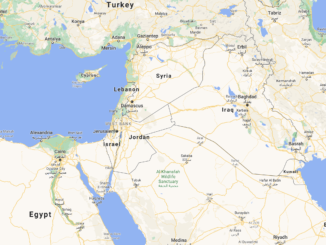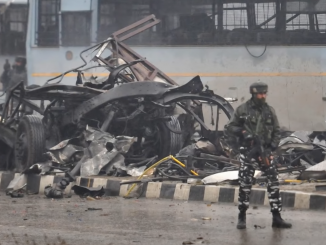 South Asian region mainly consists of seven states: Bangladesh, Bhutan, India, Maldives, Nepal, Pakistan and Sri Lanka. Its population is around 1.9 billion people which is more than 20 percent of the world population. It lies between the sea routes of the Indian Ocean (Persian Gulf and the Asia-Pacific) and the land routes of Central Asia connecting Europe to the East. It has large natural and human reservoirs, and such precious geographical leverages make it a prime and lucrative target for finance capital. It is the transit point for most of the resources and manufactures that pass out to the world. Moreover, this region is important with regard to its political scenarios. It is the most heavily militarized and bureaucratized region of the world and has a variety of complex and violent movements.
South Asian region mainly consists of seven states: Bangladesh, Bhutan, India, Maldives, Nepal, Pakistan and Sri Lanka. Its population is around 1.9 billion people which is more than 20 percent of the world population. It lies between the sea routes of the Indian Ocean (Persian Gulf and the Asia-Pacific) and the land routes of Central Asia connecting Europe to the East. It has large natural and human reservoirs, and such precious geographical leverages make it a prime and lucrative target for finance capital. It is the transit point for most of the resources and manufactures that pass out to the world. Moreover, this region is important with regard to its political scenarios. It is the most heavily militarized and bureaucratized region of the world and has a variety of complex and violent movements.
South Asia includes the second most populous country in the world, India, and the sixth most populous one, Pakistan. It is the only region in the world where two independent nuclear weapons states with major security disagreements border each other. Both the countries also share a border with China, a permanent member of UNSC having veto power. India and China have an equally vexing, unresolved border demarcation and a territorial dispute that precipitated a war between them in late 1962 and recently concluded Doklam Crisis. South Asia also is plagued by a deadly mixture of local, regional, and international terrorist organizations, like Al Qaeda, ISIS, and Taliban, with a global span and aspirations.
South Asian region is again becoming an area of geopolitical rivalry among world powers and regional states as it was also an area of competition between Soviet and U.S. forces during the period of the Cold War. Yet many years after the end of the Cold War, the region is once again becoming an arena for intense rivalry between states due to a variety of factors/ interests.
The U.S. interests have always been very significant in South Asia. During the Cold War era, the U.S. viewed South Asia from its geo-strategic position with reference to region’s close proximity to former Soviet Union, China and to vital sea lanes of communication in the Indian Ocean. The U.S., to contain the expansion of communism, utilized Pakistan as its proxy against the Soviet Union but its relations with India remained low due to the latter’s close affiliation with the Soviet Union.
After the end of the Cold War, US-Pakistan relations took a nose dive as the latter was no longer required as a proxy against Russia and was also pursuing its nuclear program which appeared a significant cause of concern. Pakistan faced U.S. foreign aid cut-offs, sanctions, and freezing of major weapon system sales due to the growing concerns over its nuclear weapons program. At the same time, the U.S. started viewing India as a renewed opportunity to enhance its defense and trade relations and a major market for its commercial interests. Moreover, after the Soviet Union disintegration, India was also looking for new partners to modernize its aging armed forces and wanted to enter into the international market economy.
In 1998, the overt nuclearization of India and Pakistan brought international sanctions on both the states and made South Asia more important from a strategic point of view. Then the 9/11 happened, and the U.S. engaged Pakistan to fight its war against terrorism and made its strategic partnership with India to contain China.
The U.S. at the moment has major security and economic interests in South Asia and would like to prevent a major terrorist attack against the U.S. and its allies, or the return of global terrorist safe havens in the region, a conventional major interstate war that could risk nuclear fallout, involvement of China that can undermine the U.S. and its allies’ interests in the region, the loss of nuclear material to terrorists/ NSAs (America’s adversaries) or the proliferation of nuclear weapons and to enable India in a manner that supports U.S. security and economic objectives across the region without unintentionally aggravating the Indo-Pakistan security dilemma or unnecessarily stoking Chinese fears of provocative encirclement.
To achieve its above mentioned strategic objectives, the U.S. has followed a policy of technology denials, multi-dimensional restrictions and pressures (state sponsoring terrorism, concerns over the security of nuclear weapons and fastest growing nuclear weapons) against Pakistan. While on the other hand, US-India strategic partnership, US-India 10-year Defense Framework Agreements, the Indo-U.S. nuclear deal to make India as an exception at IAEA, NSG waiver for the international nuclear trade and India’s entry into the NSG, LEMOA, waivers against U.S. sanctions on trade with Russia and Iran, its advocacy for India’s permanent seat in the United Nations Security Council, absence of any condemnation for the human rights violations against minorities, particularly against Kashmiris, and recently ASAT missile test; have complicated India-Pakistan deterrent relationship and strategic stability in South Asia.
The landlocked nature of Former Soviet Union focused its geostrategic and geo-economic attention on reaching to warm waters of Indian Ocean. In the Cold War era, the primary geopolitical attention of former the Soviet Union remained on India and Pakistan. Russian involvement in Afghanistan worsened its relations with Pakistan but also weakened its position in South Asia once it got disintegrated in 1989. Russia had better relations with India with an abiding continuity of interests whereas relations with Pakistan portrayed the most dramatic form and witnessed the ebb and flow of historical processes.
South Asia is the biggest arms and economic market for Russia. Arms sales to India have long been the backbone of the bilateral Russian-Indian economic relations. Recently Russia has struck a deal of S-400 missile defense system, a joint venture of Brahmos supersonic missile production and provision of nuclear submarines on lease besides maintenance of the previous arms and equipment provided over decades. However, with the ever-changing scenario of the world, nature of this cooperation is unclear because recent Indo-U.S. nuclear deal and subsequent U.S. strategic partnership with India in all domains to contain China have threatened Russian’s interests in South Asia and Russians firm foothold in the Indian arms market.
Russia’s annexation of Crimea in March 2014 resulted in U.S. and Western sanctions on Russia, to which the latter responded with countersanctions. The Ukraine-related sanctions, coupled with falling global oil prices, harmed the Russian economy. Reeling under the Western isolation, both politically and economically, Russia accelerated its pivot to Asia including South Asia which had already begun sometime earlier.
Russia’s geopolitical realities are shifting and are pursuing a multi-vectored policy in South Asia. In the present geo-strategic scenario, Russia is seeking new markets for defense exports, is seeking regional assistance in controlling domestic militancy/ terrorism in Russia, aims to assert a leadership role in its immediate sphere of influence and beyond, including South Asia, and is preparing to counter U.S. influence with the help of China.
After Indo-U.S. nuclear deal Pakistan being a front-line ally of U.S. felt insecure and thus tended towards Chinese and Russian bloc. Russia has recently lifted arms sales embargo on Pakistan, sold gunship helicopters and agreed to sell more weapons to it. Pakistan and Russia started making energy infrastructure investments in 2015. The development of relations increased with first-ever Pakistan-Russia military, anti-terrorists exercises in 2016. The Russian’s leaning towards Pakistan in the strategic domain is viewed with concern by India and the U.S.
One of the primary reasons for newly emerging ties with Pakistan is the strategic imperative to manage Afghanistan after 2014 US withdrawal. From the Russian perspective not only Afghanistan situation, but also some other crucial factors are necessary to handle in coordination with Pakistan such as counterterrorism and smuggling/ anti-narcotics efforts and this cooperation with Russia is seen with concern by the U.S. and its allies.
China has cooperated with Pakistan and India both in trade and commerce since 1947. China has established a civilian nuclear cooperation program with Pakistan under the IAEA safeguards (Chashma nuclear complex, and more recently to extend this to a new phase of 1000 MW reactors. Pakistan has jointly produced tanks, fighter, and other military equipment besides the one which the former imports. More recently in the economic cooperation besides giving billions of dollars in aid and loans, China has started multi-billion dollars CPEC project with Pakistan which is not acceptable to the U.S. and India, and both are hell bent to scuttle it by any mean. China has always extended diplomatic support to Pakistan in the hour of need and is called the iron brother of Pakistan.
China’s strategic interests in its dealings with India combine the navigation of a longstanding security rivalry, the maintenance of a robust economic relationship, and cooperation on points of convergence in global affairs. The security rivalry has its traditional aspects—the border dispute, India’s rise as a power with capabilities beyond its neighborhood such as the South China Sea and its deepening ties to the United States (particularly following the nuclear deal), as well as China’s own interests in the Indian Ocean.
India has historically seen itself as more of an outright rival to China than vice versa and its recent strategic partnership with the U.S. to contain China has been recognized with concern from China. The long-term Indian economic take-off is something on which Beijing wishes to capitalize and has invested in billions of dollars in trade and industries. China has also forged cooperation with India on shared global goals, whether in climate negotiations, the Doha trade talks, or in the context of the BRICS (which has become a more institutionalized and active grouping than most had anticipated).
China has not publicly articulated a formal South Asia “strategy,” although Beijing’s key objectives and interests in the region can be observed in its activities in and diplomacy toward these countries. The key interests, concerns, and objectives of China’s South Asia strategy fall in the peaceful coexistence, not to be encircled through India and US strategic partnership, expanding economic activities and influence in the region, enhancing access to the Indian Ocean and countering terrorism and religious. These objectives enable China to compete with potential rivals, increase China’s overall influence and diminish the influence of the United States in the region.
The United States and China, and China and Russia have a multi-dimensional relationship in economic, diplomatic, and security domains respectively. The relationship is characterized by a mix of competition and cooperation. These powers are deeply embedded in a global economic order that requires the free movement of commerce and capital, providing a significant shared interest in the structural stability of the international system, from energy supplies to global finance to human rights to climatic changes and to world peace, etc. However, translating these higher-order interests into practical cooperation has proven to be difficult, given the other ideological and strategic differences between these powers.
In the foreseeable future, unless the big powers exercise restraint in the achievement of their strategic interests, South Asia will remain in flux and a battleground for proxies. Pakistan and India both nuclear weapons states are required by all big powers to remain on their sides as a balancing factor in the prevailing environment. Unless saner views prevail, the strategic stability already under stress will change into strategic instability and will remain a potential threat to world peace. It is, therefore, incumbent upon all stakeholders to work for the strategic stability in the South Asian region.
Related Articles
Billions Dead: That’s What Could Happen if India and Pakistan Wage a Nuclear War
![]()




Be the first to comment